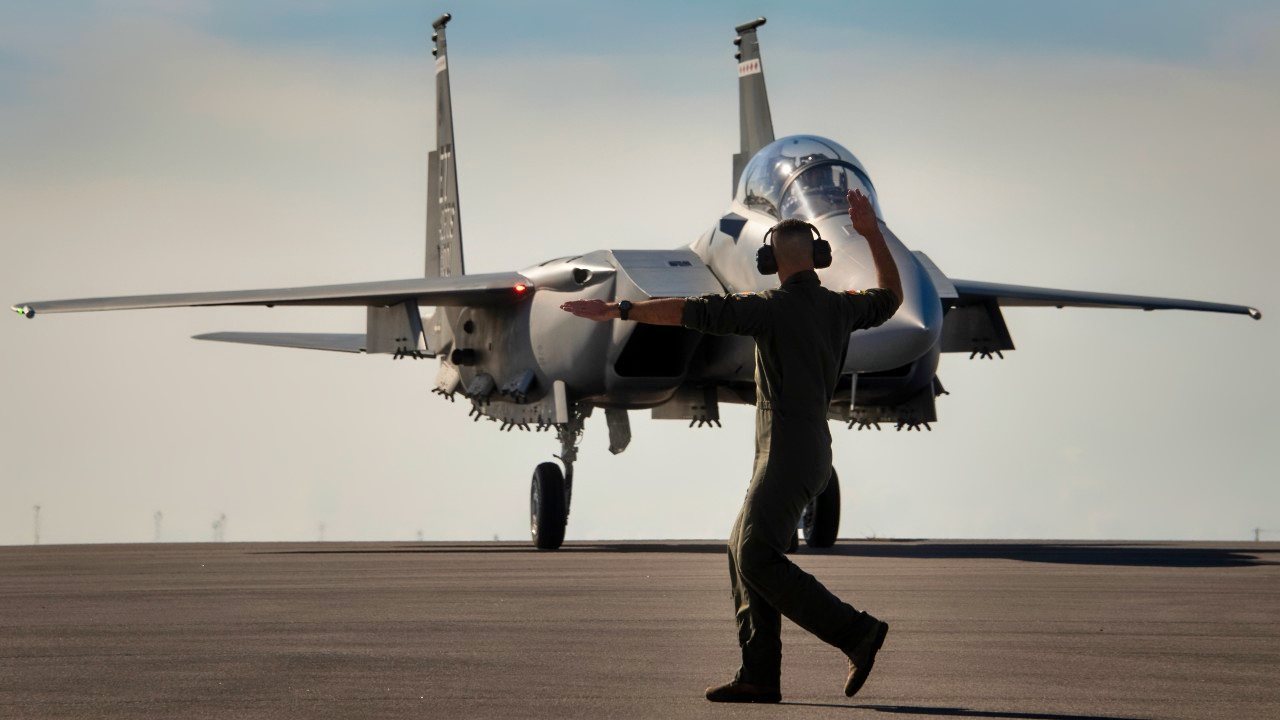F-15SE Silent Eagle: The 'Stealth' F-15 That Help Create the F-15EX Eagle II

Summary and Key Points: The F-15SE Silent Eagle, introduced in 2009, aimed to enhance the iconic F-15 with stealth features for the export market. Though it failed to gain traction, the Silent Eagle's innovations significantly influenced its successor, the F-15EX Eagle II.

-The Silent Eagle featured internal weapons bays and reduced radar cross-section, but couldn't match the F-35's prowess. Despite its cancellation, the Silent Eagle paved the way for the Eagle II, which recently broke records for weapon load capacity during test flights.
-The F-15EX Eagle II continues the legacy of the F-15, emphasizing payload over stealth while integrating advanced technologies to maintain air superiority.
F-15SE Silent Eagle Profile
The U.S. Navy’s F-15EX Eagle II platform recently made headlines when the fighter broke key records in terms of the quantity and tonnage of weapons carried in test flights. According to reports, the upgraded jet successfully carried and launched up to twelve air-to-air missiles, which is double the typical number of its predecessor. While the Eagle variant is nearly five decades old, enhanced variants ensure the platform remains relevant as new technologies emerge, and U.S. adversaries develop their own aerial arsenals. One of the proposed Eagle variants—the F-15 Silent Eagle—did not meet the standards of the service when conceptualized, however. But the specialized variant was not a complete wash, as it helped pave the wave for its Eagle II successor.

When the Silent Eagle was first introduced in 2009, it essentially embodied a modified version of the Strike Eagle with stealth characteristics. Manufacturer Boeing designed the Silent Eagle prototype specifically with the export market in mind, offering potential foreign client states an alternative to the then-new fifth-generation F-35 Lightning II fighter program. While the Silent Eagle possessed notable characteristics like internal weapons bays for reduced radar return, it simply could not match up to the prowess of the F-35. Ultimately, the Silent Eagle failed to gain traction on the export market. Seoul initially considered procuring the upgraded F-15 variant but instead opted to purchase the truly stealthy F-35. Riyadh similarly looked at the Silent Eagle as a potential purchase but ended up going with the C and D Strike Eagle variants instead.
The F-15 Eagle made its debut during the Cold War. In order to combat the Soviet Union’s new Mikoyan-Gurevich MiG-25 “Foxbat,” American engineers were eager to put forth a U.S. air superiority fighter. The Air Force selected four manufacturing giants to submit design proposals for the new prototype.
In addition to requiring fast speed to counter the Foxbat, the service required that the new jet have a maximum take-off weight of 40,000 pounds for the air-to-air role. Following a tough competition, McDonnell Douglas eventually beat out General Dynamics, North American Rockwell, and Fairchild.
Capable of flying at speeds in excess of Mach-2.5 (times the speed of sound), the resulting Eagle platform was a powerful airframe. Two Pratt & Whitney F100-PW-220 after-burning turbofans powered the fighter, which was able to produce more thrust than the plane’s drag and weight combined. Initially, the 25mm Ford-Philco GAU-7 cannon was planned to be incorporated in the platform but was later placed with the M61 Vulcan gun.
During the 1970s, several Eagle variants were introduced, all equipped with enhanced capabilities meant to elevate the platform’s success in the air. By the end of the decade, the F-15C and F-15D variants entered service, featuring Production Eagle Package improvements like increased maximum take-off weight and internal fuel. Additionally, the incorporation of a programmable armament control set enabled the new variants to carry AIM-7, AIM-9, and AIM-120A missiles.
In order to accommodate the then-newish buzz around “stealth” in the early 2000s, Boeing understood that in order to adapt the Eagle to fit this capability it would have to reduce the platform’s radar size significantly. In 2009, this effort was realized with the introduction of the F-15SE Silent Eagle.
As detailed by Sandboxx News, “Their New two-seat F-15SE Silent Eagle built upon the changes made for the Strike Eagle and its more recent Saudi Arabian export sibling, this time emphasizing a reduction in the fighter’s radar return alongside another round of avionics and system updates and upgrades.”

In terms of specs and design, the Silent Eagle essentially looked like a stripped-down version of its predecessors. “Most notably, the 750-gallon conformal fuel tanks were removed from the fighter’s fuselage and replaced with new conformal weapons bays (CWBs) that were very similar in external design to the fuel tanks they replaced. This allowed the Silent Eagle to carry its firepower internally like 5th generation fighters, eliminating the radar return created by external munitions while maintaining a similar aerodynamic profile to the Strike Eagle that had already proven itself in service.”
Despite these enhanced capabilities, lack of interest in the variant ultimately led to its cancellation. However, many analysts view the Eagle II as a successor to the F-15SE Silent Eagle, as the new platform prioritizes payload over stealth.
About the Author: Maya Carlin
Maya Carlin, National Security Writer with The National Interest, is an analyst with the Center for Security Policy and a former Anna Sobol Levy Fellow at IDC Herzliya in Israel. She has by-lines in many publications, including The National Interest, Jerusalem Post, and Times of Israel. You can follow her on Twitter: @MayaCarlin.
All images are Creative Commons.
